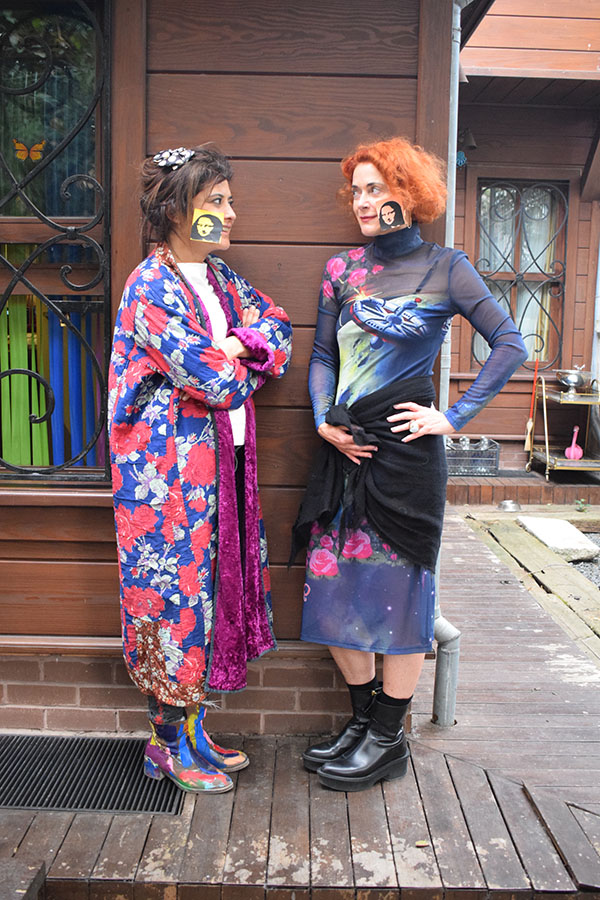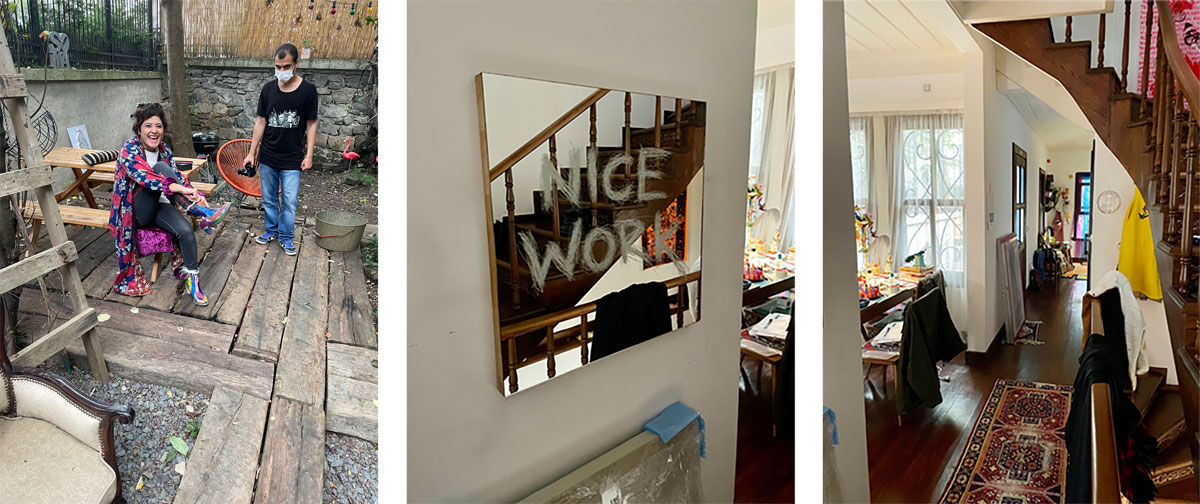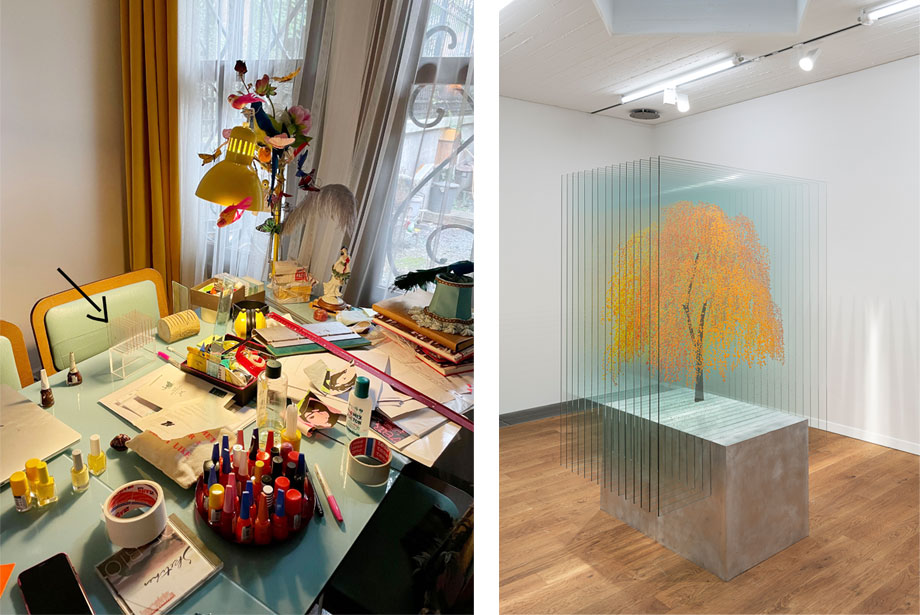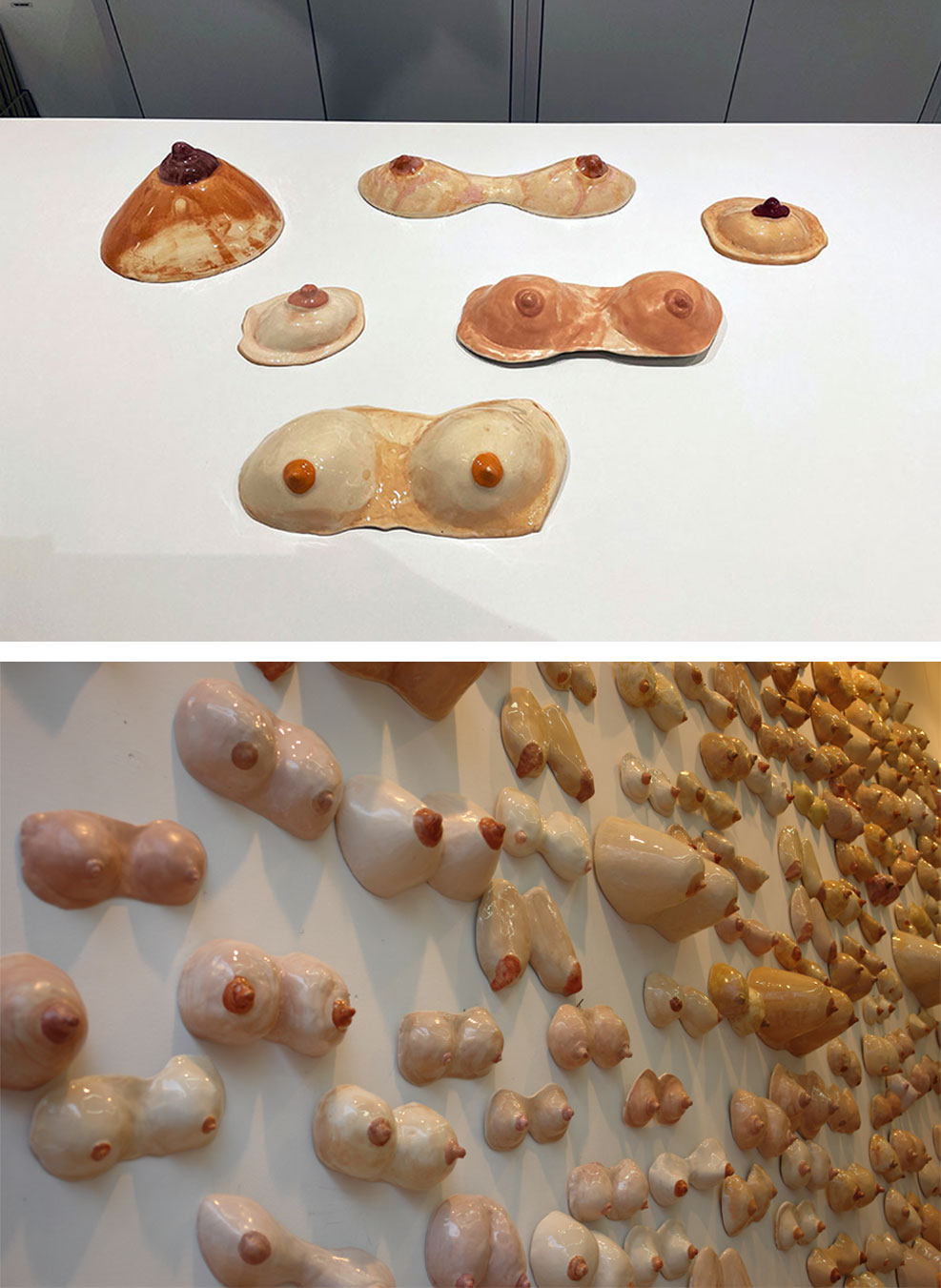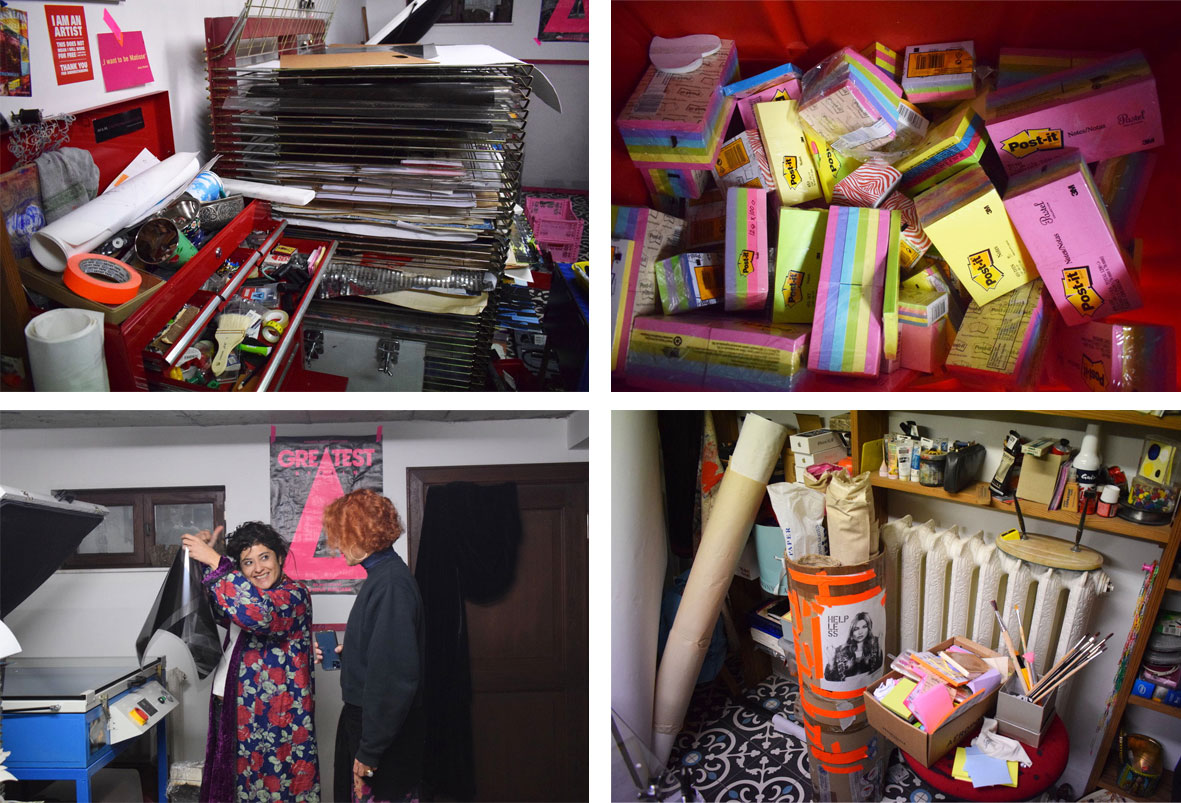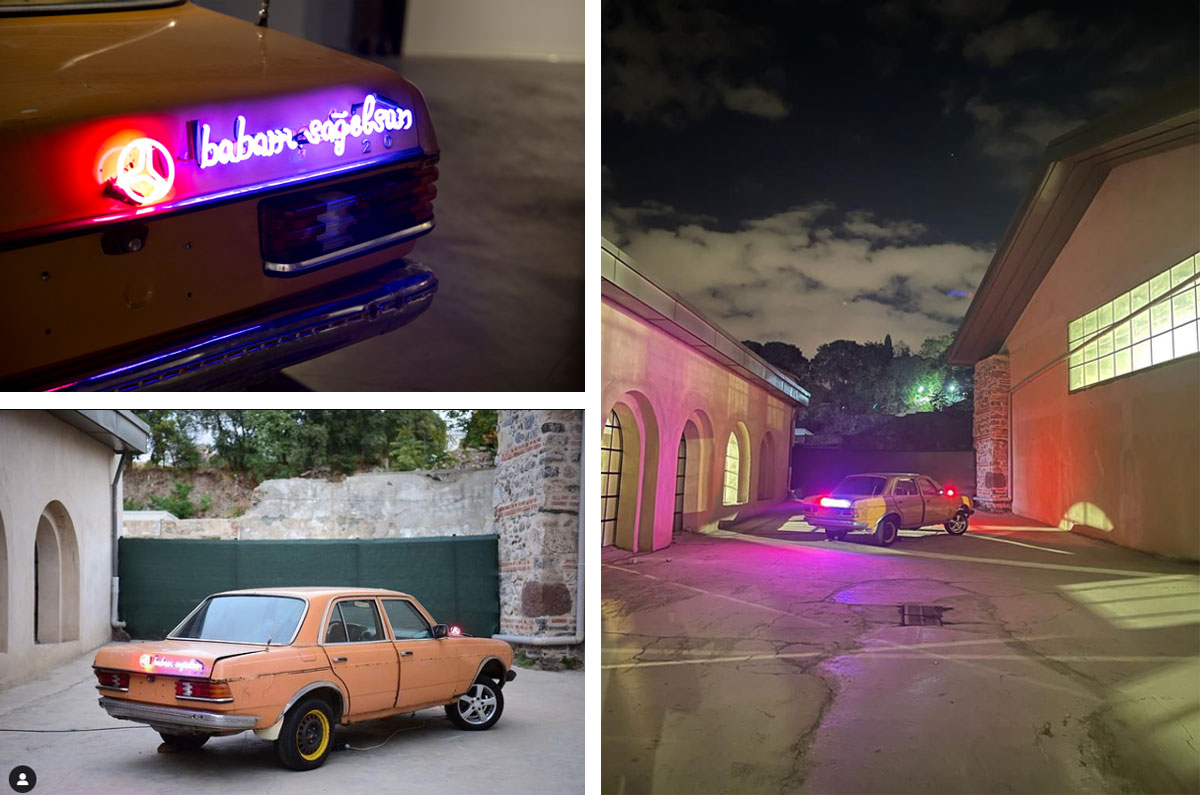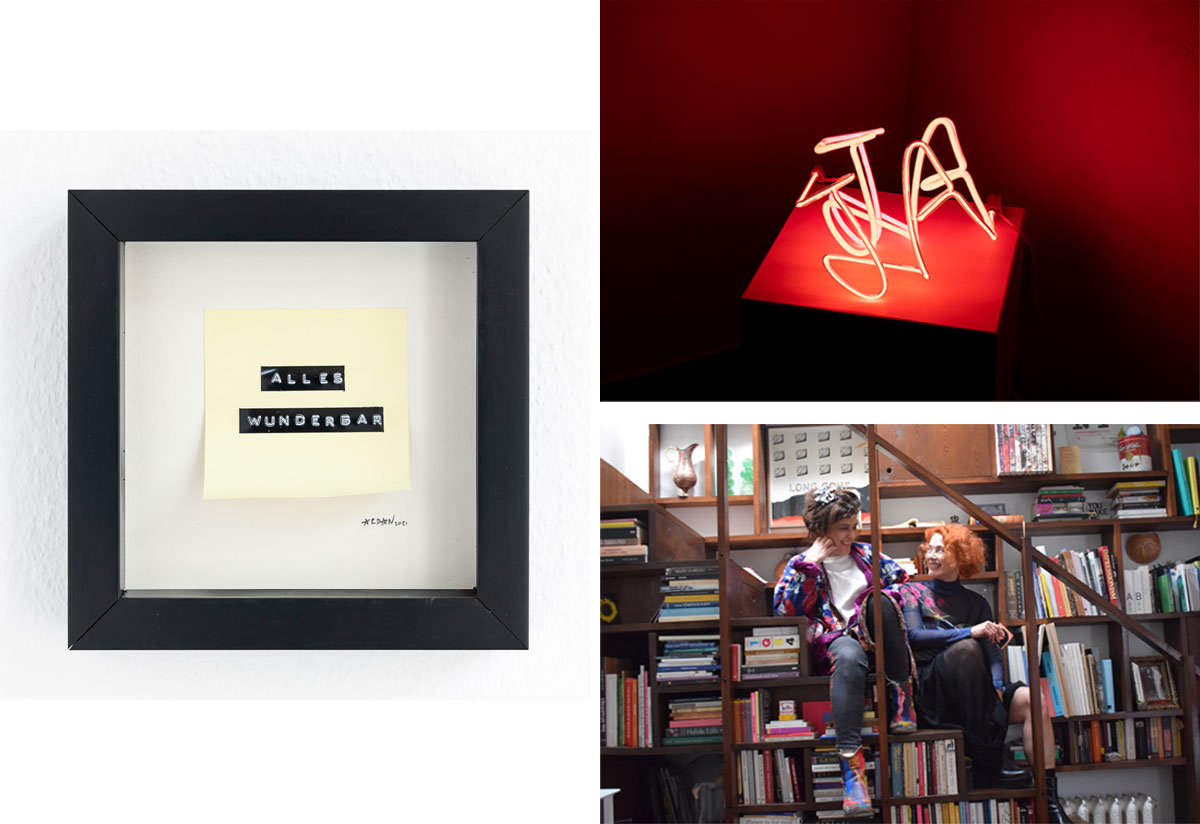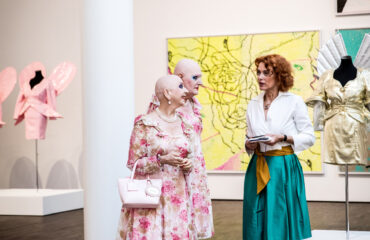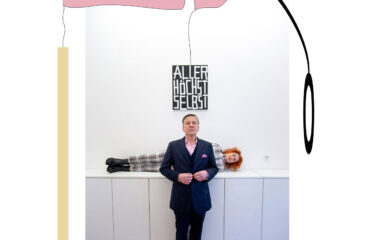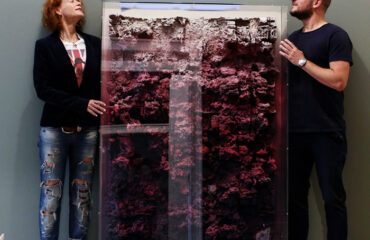Text: Dr. Elke Backes, Photos: Bertan Erman
It is indeed absolutely wonderful to stand in front of Ardan Özmenoglu’s front door in Istanbul. Surreal is perhaps even better. Just three weeks ago, she spontaneously invited me to her studio at her exhibition opening with the above title at Anna Laudel Gallery in Düsseldorf. And now I’m here. Am I even right? In a mix of English and sign language, I had communicated with the taxi driver and now hope that he hasn’t left me somewhere in the middle of nowhere.
The bell sign “hello I’m art” is already reassuring. Address seems to be correct. But unfortunately, no one opens. The tension rises again. Luckily, I see that she’s online on WhatsApp right now and quickly type my arrival into my phone. The “coming!” followed by rapid steps makes me breathe a sigh of relief. The door is torn open and there she is. She greets me, laughing and with arms wide open. She almost always laughs. Interestingly, even if she is upset, as I shall discover throughout the day we spend together.
Her house radiates warmth and cosines. She leads me to the kitchen: “Let’s have a coffee first. I wasn’t home until four o’clock this morning. It’s absolutely crazy what’s going on right now. On the one hand, the Contemporary Istanbul with its extensive program. And, in addition, my book presentation tonight. The phone rings non-stop and messages come in”,she says with playful despair and – laughs. Yesterday, at the preview of the fair, I was able to experience the fact that she really enjoys star status here. Likewise, that she likes to celebrate and seems to be endowed with abounding energy: “The house is from my grandmother. I renovated it myself”, she says proudly as she throws on a kimono-like, floral patterned coat. “By the way, the coat is also hers”, she adds, with a radiant smile. When I ask where her studio is, she answers with a sweeping gesture: “The whole house is my studio!”
Insights into Ardan’s live-in studio (mirror by Felix Höfner).
During a first brief tour, I can see this for myself. Her works are really everywhere. I discover the model of the glass sculptures from her current exhibition. Successively lined up glass panes, painted with nail polish (!), which were apparently developed at this desk. And of course, post-its can be seen everywhere – THE distinguishing mark of her work. She is the only artist who creates so-called Post-it-works. How she came up with the idea, she tells me then and there in our conversation.
Left: Workplace with the model (s. arrow) to the sculpture right: Last Opera, 2021.
First of all, I am interested in her career. How did she make it into the top 20 of Turkey’s most important female artists, international collections, such as those of the Osthaus Museum Hagen, Imoga Mundi (Benetton) Collection or the Hort Collection in New York?
Ardan: I think everything has a lot to do with the fact that I grew up in different cities, saw a lot and was very lucky to always meet the right people at the right time. My whole family consists almost entirely of academics. The fact that I was drawn to art is due first of all to my teacher in primary school, an artist who recognized my talent for painting very early on. He actually let me help shape the stage design of the theater, as his assistant.
In high school, I was lucky enough to be able to participate in a regular workshop in a community studio of two artists. Every Saturday I painted there with another ten kids for five hours and, for me, this was part of the incredibly exciting artist scene. They got regular visitors and it was completely normal to talk, smoke and drink there. A completely different and free life. That’s what I wanted. And so, I decided to take up creative studies.
Talk in the garden.
E.B.: But you first studied architecture and urban design. Why?
Ardan: In Turkey, the courses of study are very multidisciplinary. You can always add fine arts as a subject. By starting with architecture, I had the great advantage of being able to deal with spatial scale ratios. That helps me enormously with my installations today.
E.B.: And how can your international success be explained?
Ardan: Again, this is thanks to an important person. My professor at the university strongly recommended that I apply to artist-in-residence programs to gain experience abroad. With his support, I did that and immediately after graduating I spent more than half a year in San Francisco, then in Berlin, Belgium, Vienna, New York and Italy. I was exhibited in all those places, which ultimately lead to the international contacts.
E.B.: Interestingly, despite all these many influences, which are obviously also inspired by pop culture, your works often show cultural references – one could also call them subtle allusions to your home country.
Ardan: That is indeed often so. However, this is always preceded by a continuing curiosity about everything that surrounds me. I am inspired by things that define culture in some way. These can be political posters or posters such as kebab advertising, manhole covers, portraits of gods of antiquity or simply patterns.By mixing these things or giving them a new form, I place them in another, contemporary context that often reflects questions concerning the national and cultural identity of my home country.
Left: Views of installations for the exhibition Alles wunderbar, Gallery Anna Laudel, right Berliner (2016).
E.B.: To come back to the form: How do your legendary Post-it-paintings come about?
Ardan: I’ll show you that best below. That’s where my screen-printing workshop is.
On the way there I discover – ceramic breasts!?!
A dream of a man (2009)
E.B.: But you didn’t exhibit them publicly, did you?
Ardan: Yes, I did. I even plastered an entire wall with these breasts. But that was in 2009. Everything was much freer here. The restrictions have only developed gradually.
E.B.: Restrictions in the sense of censorship?
Ardan: Yes. An undeniable problem. But we’re so sick and tired of talking about it. Everyone knows it’s there and finds their way to deal with it. We continue, even if unfortunately, much happens only on a private level. A mix of government and private funding would be better, but it is what it is.
E.B.: O.k. Change of topic. How did you come up with the idea to work with post-its?
Explaining Post-it-Paintings.
Ardan: That was really a chance discovery. Early on in my studies I had discovered the medium of screen printing for myself. I thought this superimposing of different motifs and layers of paint was great. But I also always wanted to create a three-dimensionality. I had experimented with absolutely every material before; one day, I discovered a package of post-its in the workshop. I used them to cover an entire canvas, painted, exposed and printed on it. It was late and I had to stop. The next morning, I couldn’t believe my eyes. The previously flat pieces of paper had curled up and developed a fantastic structure. Giddy with excitement, I ran up to my professor, calling Look what I invented. He shook his head, laughing, and said, Then keep going.
Ardan in her screen-printing workshop.
E.B.: And you obviously did that undeterred and developed a new form of relief. What appears so playful and harmless, however, often contains critical messages on closer inspection. Also, in your neon works. I am thinking of the old Mercedes shown in the sculpture exhibition of the fair which entertainingly caricatures exaggerated masculine posturing.
Babam Sağolsun (2017).
Ardan: That’s right. The criticism in this case is directed at the education in this country, which is still based on patriarchal ideologies and provokes this posturing. Emblematic of this is the saying “Babam Sağolsun” [thanks to my father], which is always used theatrically. Because our men find it incredibly cool to stick pithy sayings on the back of their car and, also, the Mercedes – no matter in what condition – is considered an absolute status symbol, I came up with the idea of attaching the saying with girlish pink neon lettering to the has-been-Mercedes and also to trace the logo in pink.
Speaking of girlish. After a glance at the clock, things suddenly get hectic: Oh dear! I need to change. The book presentation! Wait a minute, I’ll be right back. And she dashes off, to appear minutes later before me, perfectly styled, and, as always, radiant with the rhetorical question: Ha! All wonderful, isn’t it?
Left: Alles wunderbar (2021), top right: Ja (2021).
Ja, she’s right. What an inspiring day!
Be sure to check out her exhibition! (Until 13 November at Galerie Anna Laudel, Düsseldorf)
Further Information
Artist’s website: https://www.ardanozmenoglu.com
About the exhibition „Alles wunderbar“ Anna Laudel Gallery_Ausstellung
